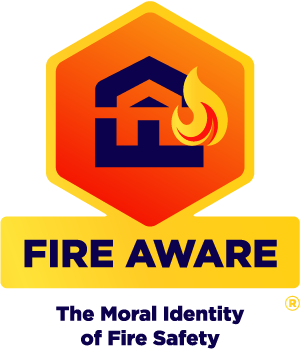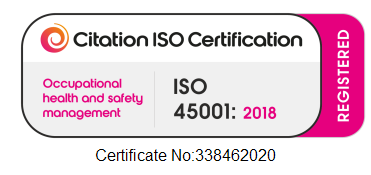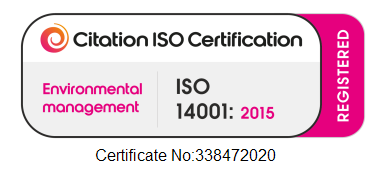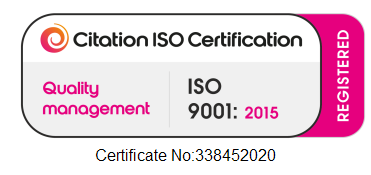Fire Risk Assessments
A Structured Review
A Fire Risk Assessment (FRA) is a legal requirement under the Regulatory Reform Fire Safety Order 2005. It is a review process which follows a structured checklist to fully evaluate a building or premises for fire hazards, determine the likelihood of a fire and advise on the consequences in the event of a fire.
Tailored to Each Building or Premises
Arranging an FRA encompasses more than simply procuring a generic, off-the-shelf document that can be acquired for a fee. Each FRA is distinctly tailored to individual businesses and the suggested measures and resulting action plan, are entirely customized for each specific building.
Legal Obligation
Under the Regulatory Reform (Fire Safety) order 2005, it is a legal obligation for the ‘Responsible Person’ of non-domestic premises to conduct a comprehensive fire risk assessment. This assessment must identify potential fire hazards, evaluate the risk to occupants and visitors, and establish appropriate safety measures. Failure to comply with this requirement can result in serious legal consequences. If a Fire Risk Assessment is not conducted or is deemed insufficient, the responsible person could face significant penalties, including fines or even imprisonment. Regularly revisiting and updating the assessment is crucial to ensure ongoing compliance and the safety of all individuals within the premises.
‘Responsible Person’
The Responsible Person is a legally created entity, as defined in Article 3 of the Regulatory Reform Fire Safety Order (RRO) . The Responsible Person is defined as the person who has control, to any extent, of the premises (which can include the owner, employer, occupier, or other person with control over the building or the relevant parts of it). In some cases, there may be more than one Responsible Person for a single premises, depending on the extent of control each person has.
Responsibilities of a ‘Responsible Person’
As defined on the Gov.UK website the responsibilities of a ‘Responsible Person’ are listed below:
As the Responsible Person, you must comply with Articles 8 to 22 and 38 of the Fire Safety Order and any regulations made under article 24 as relevant, which set out how you ensure fire safety throughout your premises including a requirement to complete a fire risk assessment.
You must record the significant findings of this risk assessment including measures that have been or will be taken and any groups of persons identified by the assessment as being especially at risk if:
- you have 5 or more employees
- there is a licence under an enactment in relation to the premises (for example, an alcohol licence)
- there is an alterations notice in place in relation to the premises requiring this
Examples of actions you should take include but are not limited to:
- minimise the risk of a fire occurring, and take steps to make sure that if a fire starts, it can’t spread through the building
- make sure escape routes are available and that any emergency exit doors are not locked and can be quickly and easily opened without needing a key
- where a door is shut for security purposes (such as in the stockroom of a shop), make sure this can be easily opened from the inside by installing push bar devices – these should not be blocked or obstructed
- make sure there is an adequate way to detect fires and that this raises an alarm to alert everyone to evacuate when required.
- in a workplace, train staff on what to do if a fire happens
- in a residential building, tell the residents what the fire safety measures and evacuation strategy are
- co-operate and co-ordinate with other Responsible Persons within the building.
- check that shared escape routes are always clear.
Premises that come under the Regulatory Reform (Fire Safety) Order 2005
The scope of the Regulatory Reform (Fire Safety) Order 2005 (RRO) encompasses a wide range of premises, with the exception of private domestic settings such as individual houses, private flats, and apartments. The RRO’s applicability extends to diverse establishments and spaces where fire safety is a paramount concern.
This includes, but is not limited to the following:
- Commercial Properties: This includes office buildings, retail stores, shopping centres, warehouses, factories, and industrial facilities.
- Public Buildings: Premises open to the public such as schools, universities, hospitals, libraries, museums, galleries and community centres.
- Entertainment Venues: Cinemas, theatres, concert halls, sports stadiums, and other places where large gatherings occur.
- Hospitality Sector: Hotels, restaurants, bars and nightclubs where people gather for leisure and hospitality.
- Residential Care Homes: Facilities providing care to elderly or vulnerable individuals.
- Healthcare Facilities: Hospitals, clinics, and other healthcare centers where patients safety is critical.
- Education Institutions: Schools, colleges, and universities where the safety of students and staff is of utmost importance.
- Transport Hubs: Airports, train stations, bus terminals, and similar transport locations.
- Shared Residential Premises: Multi-Occupancy buildings, such as apartment complexes and shared housing units.
- Places of Worship: Churches, templates, mosques, synagogues, and other religious institutions.
- Leisure and Sports Facilities: Gyms, Swimming pools, sports complexes, and other recreational venues.
- Cultural and Heritage Sites: Historical buildings, monuments, and sites of cultural significance.
It’s important to note that the specific fire safety requirements and measures can vary depending on the nature of the premises, the level of occupancy, and the potential fire hazards associated with each setting. The RRO is designed to ensure that these various types of premises are adequately equipped to prevent, manage, and respond to fire incidents, safeguarding both property and lives.
Purpose of an FRA
The purpose of an FRA is to identify what you need to do to prevent fire and keep people safe and they usually fall under the remit of the ‘responsible person’ of the building. Many people carrying this title don’t have the time or expertise to complete fire risk assessments personally and choose to outsource this to a ‘competent person’. The need to call on the services of professional risk assessors such as Alcema Fire Safety consultants becomes a huge lift of a burden to companies and people within companies who really want to carry on with ‘business as usual’ but also stay above the law and not leave the safety of others up to chance.
Different Types of FRAs
Fire risk assessments come in four distinct types, each tailored to the level of detail required for specific situations. The type 1 assessment serves as the standard choice encompassing a comprehensive evaluation of fire hazards within a building. However, should circumstances suggest a need for more in-depth scrutiny, one of the other assessment types may be designated. The flexibility to opt for different assessment types enables a nuanced understanding of fire risks, ensuring that the chosen approach aligns precisely with a level of complexity and potential hazards present in the building. A full explanation of all four types of risk assessment may be found below.
The 4 Types of FRA
Type 1 – Common Parts Only – Non-destructive
This is a basic FRA required in accordance with the RRFSO. If there are concerns that there are defective areas in the protection of the structure of the building such as weaknesses in the compartmentation of the building a Type 1 inspection is likely to be adequate.
It will include the assessment of all the common parts of a building, such as a lobby area in a shared block of flats – but not individual dwellings.
We will be able to guide and advise on whether this FRA is sufficient or if a more in-depth assessment is needed
Type 2 – Common Parts Only - Destructive
This covers all within a Type 1 fire risk assessment however it also includes an element of destructive inspection which usually involves a contractor working alongside the assessor to help with the destruction for exploratory reasons and also to make good after the assessment. This type of FRA is usually only ever carried out if there is real reason to suspect there are serious structural defects causing compartmentation and increased risk of the spreading of fire.
Type 3 – Common Parts and Flats - Non-destructive
This type of FRA is more comprehensive and includes all covered under a Type 1 FRA but also includes consideration of the means of escape from a building and fire detection. This type of assessment covers all common areas of a building and individual dwellings and it is usually only considered necessary if there are fire risks within individual dwellings. This type of FRA is particularly common for flats which need excellent resistance from doors to prevent the spreading of fire from one flat to another.
Type 4 – Common Parts and Flats – Destructive
The Type 4 fire risk assessment covers all included in a Type 3 FRA but it will include an element of destructive exploration and will therefore require a contractor to be involved alongside the assessor to help with the structural exploration as well as make good after. Type 4 FRAs are more comprehensive and complicated to carry out mainly because access to individual dwellings is required and the need to make good properties after assessment.
Reports from Destructive FRAs
A Type 2 or Type 4 Fire Risk Assessment entails a level of detailed investigation that might require accessing and examining specific structural elements within a building. This is crucial for a thorough understanding of the overall fire safety of the structure. During these in-depth surveys, certain defects might be uncovered, and it’s not uncommon for these findings to underscore the necessity for significant corrective actions to mitigate the identified risks.
These corrective actions could involve various measures, such as improving compartmentalization, enhancing the ventilation system, or addressing issues with fire-rated door sets. However, in certain situations, It might be impractical or even impossible to carry out all the necessary modifications to reduce the risk to an acceptable level. In such cases our specialists will provide guidance on alternative fire engineered solutions.
These alternative measures could encompass changes to the buildings evacuation strategy, upgrades to the fire alarm system, or adjustments to the arrangement of fire escape routes. These solutions might be seen as more feasible options compared to extensive structural changes, all while maintaining an unwavering focus on ensuring the safety of persons within the building is of the utmost priority.
The Assessment Process
Step 1: Identify hazards.
Step 2: Identify persons at risk of those hazards.
Step 3: Evaluate mitigating measures already in place to reduce the identified risk.
Step 4: Identify further mitigating measures required to reduce the identified risk down to an acceptable level.
Step 5: Record and review the FRA on a regular basis.
The following aspects will all be considered and included in the assessment:
- emergency routes and exits
- fire detection and warning systems
- fire fighting equipment
- the removal or safe storage of dangerous substances
- an emergency fire evacuation plan
- the needs of vulnerable people, for example the elderly, young children or those with disabilities
- providing information to employees and other people on the premises
- staff fire safety training
- Emergency lighting.
- Emergency/evacuation signage.
- All fire/life safety systems within the building including ventilation and fire doors.
- Documentation relating to the maintenance, inspection and upkeep of all fire/life safety systems within the building.
- Management processes relating to fire/life safety within the building.
Accreditations
All our consultants are certified and undergo regular updated training. This means with our input, and alongside actioning our recommendations, you can be assured your building’s fire risk exposure is minimised as far as it is practical and feasible. With our ethos of professionalism and providing the highest level of expertise and customer service it soon becomes clear why we develop such great client relationships and receive such a high volume of recommendations.






